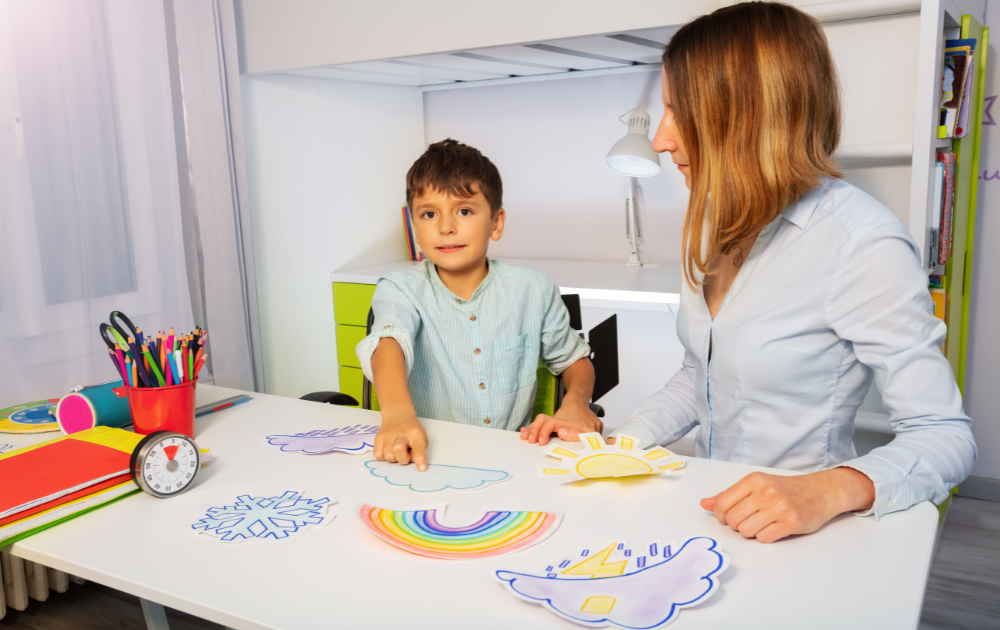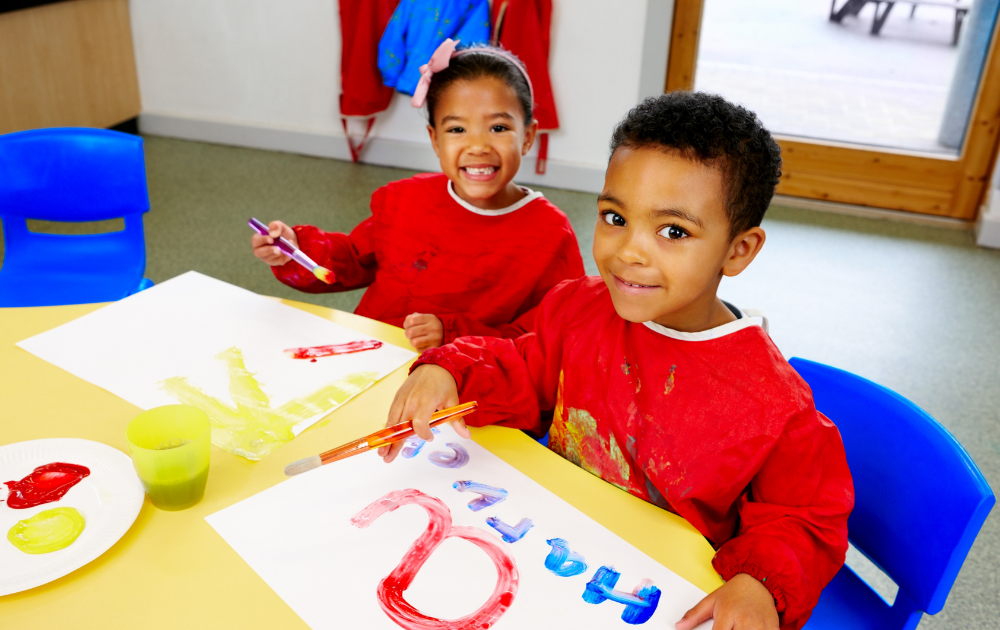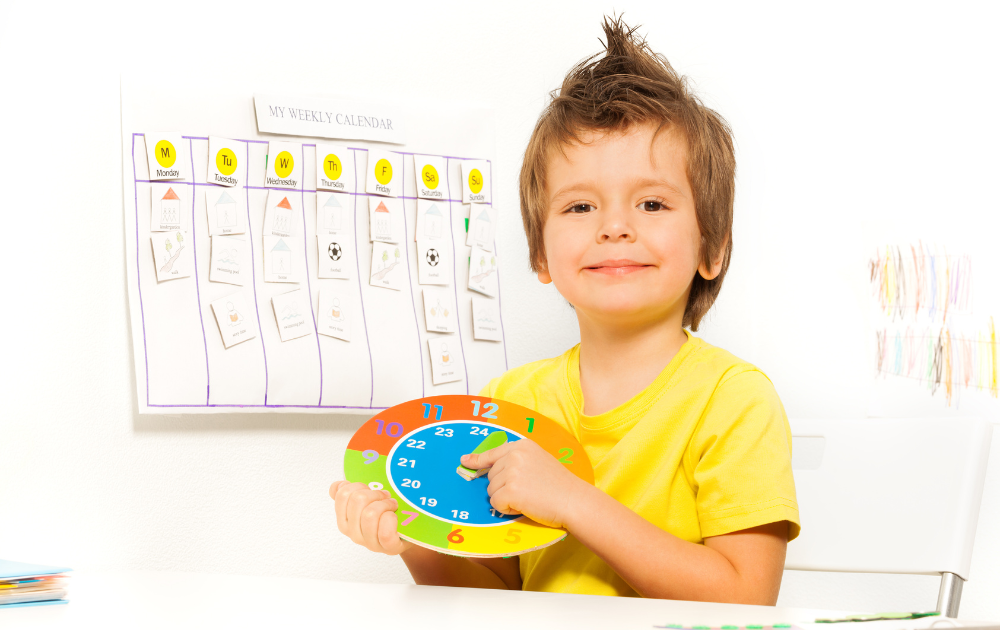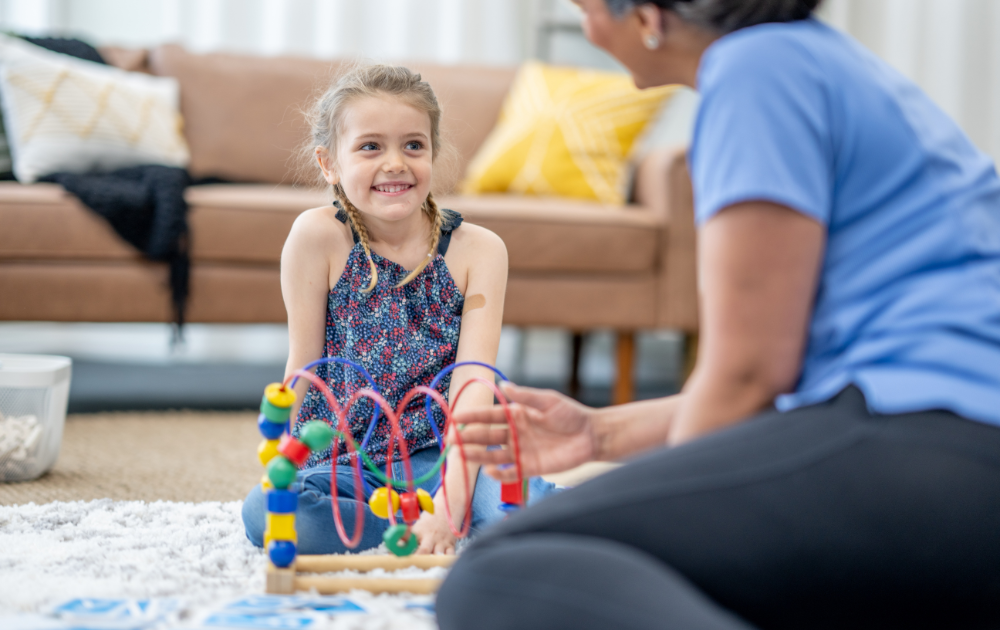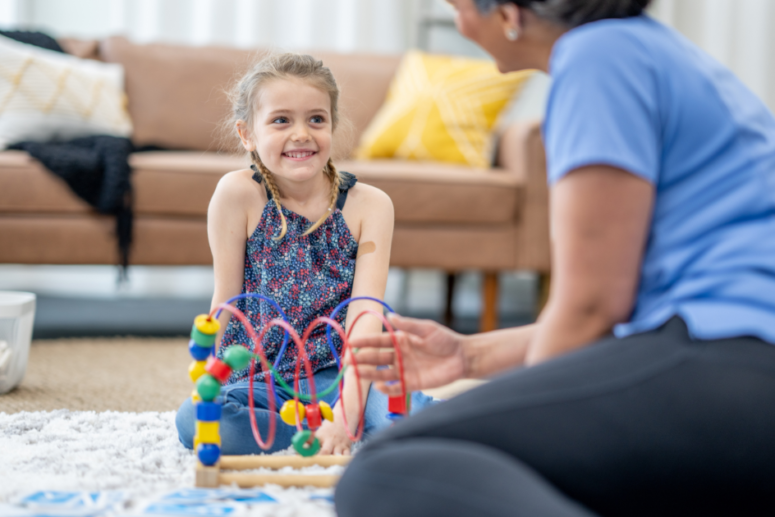
Table of Contents
Implementing ABA therapy activities at home can be highly beneficial for children with autism. These activities aim to expand vocabulary, improve social interactions, and help children learn new skills, such as sorting numbers, colors, emotions, and completing puzzles. By engaging in ABA therapy activities at home, parents and caregivers can create a supportive learning environment that complements the therapy provided by professionals.
Benefits of ABA Therapy at Home
ABA therapy, as an evidence-based approach, is the most common therapy for children with autism. It provides strategies and activities that can be tailored to a child’s interests at home, maintaining motivation and engagement. By incorporating ABA therapy into the home environment, parents can ensure a consistent and structured approach to their child’s learning and development.
One of the significant benefits of ABA therapy at home is the opportunity to reinforce skills and behaviors in the child’s natural environment. This allows for generalization of learned skills, meaning the child is more likely to apply those skills in various settings beyond the therapy sessions. It also provides an opportunity for parents to actively participate in their child’s therapy, fostering a stronger bond and a deeper understanding of their child’s needs.
Tailoring Activities to Child’s Interests
Tailoring ABA therapy activities to a child’s interests is key to maintaining their motivation and engagement. By incorporating activities that the child enjoys, parents can create a positive and fun learning environment. This can be done by incorporating the child’s favorite toys, games, or hobbies into therapy sessions.
For example, if a child has a particular interest in cars, parents can use car-themed activities to teach concepts such as colors, shapes, or counting. This not only enhances the child’s learning experience but also increases their enthusiasm for the therapy sessions.
By tailoring activities to a child’s interests, parents can create a personalized learning environment that aligns with their child’s preferences and strengths. This approach promotes a positive attitude towards learning and encourages the child to actively participate and engage in therapy activities.
Through consistent implementation of ABA therapy techniques at home, parents can support their child’s learning and development, reinforce positive behaviors, and promote generalization of skills to various settings.
Implementing ABA Therapy at Home
When it comes to implementing ABA therapy at home, there are several strategies that parents and caregivers can utilize to create a supportive and effective learning environment for their child. This section will explore three key methods: incorporating favorite activities, using visual schedules, and seeking guidance from a Board-Certified Behavior Analyst (BCBA).
Incorporating Favorite Activities
One of the most effective ways to engage a child in ABA therapy at home is by incorporating their favorite activities into the therapy sessions. By using their preferred toys, games, or hobbies, you can create a positive and motivating atmosphere for learning. For example, if your child enjoys playing with cars, you can incorporate car-themed activities into their therapy sessions. This not only captures their interest but also helps them generalize their skills to real-life situations.
By incorporating favorite activities, you can increase your child’s engagement and participation in therapy, making it a more enjoyable and rewarding experience for both of you. Remember to provide specific praise and reinforcement when your child demonstrates the desired behaviors during these activities.
Using Visual Schedules
Visual schedules are an essential tool in ABA therapy, providing structure and predictability for children with autism. These schedules use visual cues, such as pictures or symbols, to represent different activities or tasks. They help children understand what is expected of them and what will happen next, reducing anxiety and promoting independence.
When implementing ABA therapy at home, creating a visual schedule can help your child navigate through their daily routines. Start by breaking down the tasks into smaller, manageable steps and create visual representations for each step. This can be done using pictures, drawings, or even words, depending on your child’s level of understanding. Place the schedule in a visible location and refer to it throughout the day to reinforce the routine and facilitate smooth transitions.
Seeking Guidance from BCBA
Implementing ABA therapy at home can be overwhelming, especially if you are new to the techniques and strategies involved. Seeking guidance from a Board-Certified Behavior Analyst (BCBA) is crucial for ensuring the effective delivery of ABA therapy techniques.
A BCBA is trained in the principles of ABA and can provide valuable insights and strategies tailored to your child’s specific needs. They can help you develop individualized therapy plans, set goals, and provide ongoing support and guidance. A BCBA will work closely with you to assess your child’s progress, make necessary adjustments to the therapy plan, and answer any questions or concerns you may have.
By collaborating with a BCBA, you can ensure that you are implementing ABA therapy techniques correctly and effectively. They can provide feedback, offer suggestions for improvement, and help you navigate any challenges that may arise during the therapy process.
Engaging ABA Therapy Activities
Engaging children in ABA therapy activities at home is an effective way to expand their vocabulary, improve social interactions, and help them learn new skills. Here are three activities that can be incorporated into your ABA therapy routine:
Matching Colors and Objects
Matching colors and objects is a simple yet effective ABA therapy activity that can be done using toys or markers. Start by selecting a set of objects or toys in different colors. Encourage your child to match objects of the same color together. For example, if you have red, blue, and yellow blocks, ask your child to group the blocks by color. This activity helps develop color recognition skills, visual discrimination, and categorization abilities.
Displaying Emotions Through Visuals
Displaying emotions through visuals is a valuable ABA therapy activity that aids in emotional recognition and understanding. Create a visual chart or use photos to represent different emotions such as happy, sad, angry, and surprised. Show your child each visual and discuss the corresponding emotion. Encourage them to identify and express their own emotions using the visuals as a reference. This activity helps enhance emotional intelligence and promotes effective communication.
Using Flashcards for Skill Development
Flashcards are a versatile tool for ABA therapy and can be used to target specific skills such as the alphabet, numbers, shapes, or vocabulary words. Create or purchase flashcards that align with your child’s learning goals. Present one flashcard at a time and ask your child to identify or name the item shown. For example, if you are working on letter recognition, show a flashcard with the letter ‘A’ and ask your child to say the letter aloud. This activity promotes visual recognition, language development, and cognitive skills.
By incorporating these engaging ABA therapy activities into your at-home routine, you can create a structured and supportive learning environment for your child. Remember to tailor the activities to your child’s interests and abilities, and seek guidance from a BCBA (Board Certified Behavior Analyst) for personalized recommendations.
Impact of In-Home ABA Therapy
Implementing in-home ABA therapy activities can have a profound impact on individuals with autism. These activities are designed to target specific areas of development and promote positive behavioral changes. Let’s explore some of the key impacts of in-home ABA therapy:
Developing Behavioral Skills
ABA therapy activities aim to expand vocabulary, improve social interactions, and help children learn new skills, such as sorting numbers, colors, emotions, and completing puzzles at home. By breaking down complex tasks into smaller, achievable steps, individuals with autism can gradually develop and generalize these skills in various settings.
Through consistent and structured practice, in-home ABA therapy helps individuals with autism acquire adaptive behaviors and reduce challenging behaviors. The strategies and techniques used in ABA therapy are evidence-based and have been proven effective in promoting positive behavioral changes.
Improving Communication and Social Interactions
Communication and social interactions are often areas of difficulty for individuals with autism. In-home ABA therapy activities focus on enhancing these skills by incorporating language-building exercises, social play, and interactive activities.
ABA therapists work closely with individuals with autism to improve their communication abilities, such as using gestures, vocalizations, and eventually, verbal language. They also teach important social skills, like turn-taking, sharing, and initiating conversations, to help individuals with autism engage more effectively with their peers and family members.
Empowering Parents in Reinforcement
In-home ABA therapy not only benefits individuals with autism but also empowers parents in reinforcement techniques. ABA therapy provides parents with the knowledge and skills to effectively reinforce positive behaviors and support their child’s learning of daily tasks.
By actively participating in therapy sessions and implementing strategies at home, parents become an integral part of their child’s progress. They can provide consistent and targeted support, creating a positive and nurturing environment that facilitates learning and development.
Through ongoing collaboration with ABA therapists and utilizing techniques learned during therapy sessions, parents can reinforce positive behaviors, generalize skills across different settings, and track progress over time. This active involvement empowers parents to become advocates for their child’s development and well-being.
Sources:
https://www.autismparentingmagazine.com/aba-therapy-activities-guide/
https://www.thechicagoschool.edu/insight/psychology/6-at-home-aba-activities-for-kids-aba/
https://www.verywellhealth.com/low-cost-autism-therapies-parents-can-provide-at-home-417236
- Autism Routine Disruption in Adults: Coping Tips - July 16, 2024
- Autism and Obsession: An Overview - July 16, 2024
- Autism and Taking Clothes Off: Management Tips - July 16, 2024

